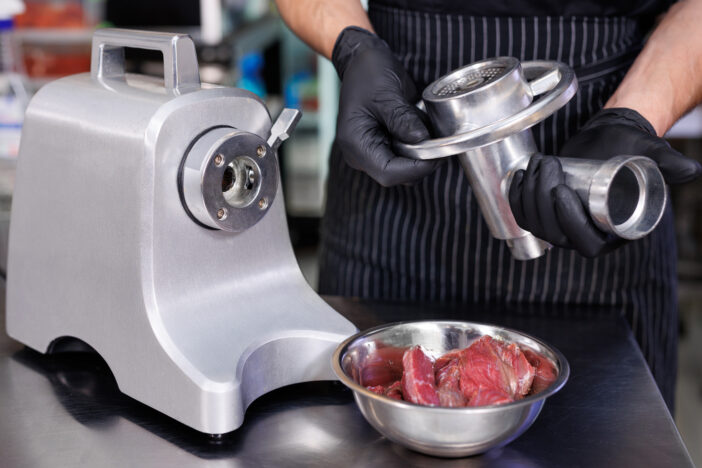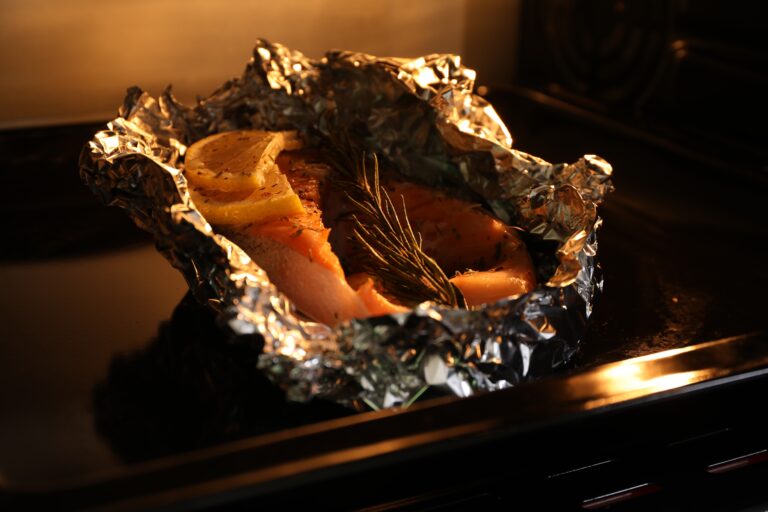5 Meat Processing at Home Tips to Enhance Your Cooking Skills
Master meat processing at home by understanding different meat types, processing techniques, essential tools, basic techniques, safety guidelines, and tips for enhancing flavor and texture.

Diving into meat processing at home can transform your cooking, elevating your meals from good to gourmet. Mastering the basics—from the right cuts to the proper tools—ensures your kitchen endeavors are both successful and satisfying.
Disclosure: As an Amazon Associate, this site earns from qualifying purchases. Thank you!
Understanding Different Types of Meat

Mastering meat processing starts with recognizing the distinct characteristics of different types of meat. Here’s a breakdown of key processing techniques for beef, chicken, and pork.
Beef Processing Techniques
- Select and Prepare: Start with high-quality cuts like ribeye or sirloin for better flavor and tenderness. Marinate or tenderize as needed to enhance these characteristics.
- Grind for Versatility: Use a meat grinder to process beef for homemade burgers, sausages, or meatballs. Keeping the meat cold during grinding prevents texture loss and keeps it safe.
- Age for Excellence: Consider dry-aging beef for a profound enhancement in taste and tenderness. This process may take from a few days up to several weeks.
Chicken Processing Techniques
- Prioritize Safety: Chicken must be handled with utmost safety to avoid cross-contamination. Always use separate cutting boards and utensils.
- Cut According to Recipe: Different dishes require distinct cuts. Learn to master breast filleting, thigh deboning, and whole bird breakdowns.
- Cooking Considerations: Remember that different parts of the chicken cook at varying rates; thighs and legs have more fat and require longer cooking times than the leaner breast.
Pork Processing Techniques
- Assess Fat Content: Pork cuts vary widely in fat content. Choose the right cut for the right dish, such as fatty cuts for slow roasting and leaner cuts for quick searing.
- Cure for Flavor: Smoking or curing pork enhances its flavor and preserves it. Popular cured products include bacon and ham.
- Utilize All Parts: From chops and tenderloin to belly and shoulder, each part of the pig offers unique flavors and benefits. Don’t hesitate to experiment with less familiar cuts like cheeks or hocks.
By understanding these techniques, you’ll enhance your cooking repertoire and enjoy more flavorful and satisfying meals.
Essential Tools for Meat Processing at Home

Selecting the right tools is crucial for accomplishing perfect meat processing at home. Here’s what you need to get started:
Meat Grinders
Invest in a sturdy meat grinder if you’re serious about sausage-making or customizing your ground meat blends. They allow for control over texture and fat content, ensuring your dishes have exactly the flavor and consistency you desire. Popular brands like KitchenAid offer attachments that work with their mixers, combining convenience and power.
Knives and Cutting Boards
A sharp, high-quality knife set is indispensable for meat processing. You’ll want a variety of knives—such as a chef’s knife, a boning knife, and a carving knife—to handle different tasks from trimming fat to slicing steaks. Pair these with a heavy-duty cutting board, preferably made of wood or bamboo, capable of withstanding frequent chopping without harboring bacteria.
Meat Thermometers
To ensure your meat is not only delicious but also safe to eat, a reliable meat thermometer is a must. It guarantees that you cook meat to the perfect doneness, avoiding undercooked or overcooked areas. Digital thermometers are especially user-friendly, providing quick and accurate readings.
Basic Meat Processing Techniques
Building on the essentials of selecting the right tools, mastering these basic meat processing techniques will elevate your home cooking, ensuring safety and enhancing flavors.
Grinding Your Own Meat
Grinding meat at home offers control over the freshness and fat content, essential for crafting perfect burgers, sausages, and more. Start by selecting quality cuts — chuck for beef, shoulder for pork, and thigh for chicken. Keep your meat and grinding equipment chilled to prevent fat from smearing, which ensures a cleaner grind and better texture. Opt for a coarse grind for sausages and chili, while a finer grind suits burgers and meatballs.
Cutting and Trimming Techniques
Efficient cutting and trimming not only reduce waste but also impact the cooking time and texture of your meat. Use a sharp boning knife for trimming away fat and sinew, which can toughen during cooking. Slice against the grain when cutting steaks to shorten the muscle fibers, enhancing tenderness. Regular sharpening of your knives ensures precision cuts, maintaining the meat’s integrity and quality.
Marinating and Tenderizing Methods
Marinating infuses the meat with flavor and tenderizes tougher cuts, ideal for grilling or roasting. Choose acidic bases like vinegar or citrus juice, mixed with herbs and spices, to break down fibers and add depth of flavor. For mechanical tenderizing, use a mallet on tougher cuts like flank or skirt steak to improve texture. Limit marinating times to avoid overly soft or mushy meat; two hours is sufficient for most cuts, while more robust cuts can benefit from overnight marinating.
In the video, Purdue Agriculture explains –
Purdue Agriculture
- Unexpected Career Path: Jessica Smith, who began as a vegetarian, transitioned into meat processing to support her farm’s growth.
- Understanding Processing: Farmers must comprehend the meat processing steps and communicate with both processors and consumers to meet expectations.
- Media Influence: Negative media coverage has pushed consumers to prefer local products from trusted sources like farmers markets and small processors.
- Safety in Processing: Both large and small processors can provide safe food if they adhere to proper standards.
- Inspection Levels: Indiana offers USDA inspection for national sales, state inspection for in-state sales, and custom exempt processing for personal use.
- Federal Inspection: Transitioning to federal inspection allows processors to sell meat across state lines, enhancing business sustainability.
- Regulatory Challenges: Rapidly changing inspection and food safety regulations pose difficulties, especially for smaller processors.
- Purdue Extension Role: Purdue Extension helps processors understand regulatory changes and connects farmers with markets and resources.
- Support for Small Farms: Purdue’s small farms team provides tailored educational programs to help small farms succeed economically.
- Local Food Movement: The aim is to bring livestock back to farms and support family farms, maintaining local food production amidst industry consolidation.
Safety Guidelines in Meat Processing

After learning about the essentials of meat cuts, tools, and preparation techniques, it’s crucial to prioritize safety to prevent contamination and ensure a healthy cooking environment.
Handling Meat Safely
- Wash Your Hands: Always wash your hands with soap and water for at least 20 seconds before and after handling raw meat.
- Use Separate Utensils: Keep separate sets of cutting boards, knives, and plates for raw and cooked meats to avoid cross-contamination.
- Cook Thoroughly: Ensure meats like beef, pork, and poultry reach their safe internal temperatures—145°F for beef and pork, 160°F for ground meats, and 165°F for poultry.
Proper Storage of Processed Meat
- Temperature Control: Store processed meat below 40°F to inhibit bacterial growth.
- Airtight Packaging: Use vacuum-sealed bags or tightly sealed containers to extend the shelf life and maintain quality.
- Labeling: Always label your packages with the processing date to track freshness and prioritize older stocks.
- Regular Cleaning: Clean all meat processing tools and surfaces immediately after use to prevent bacterial buildup.
- Sanitize: Use a solution of 1 tablespoon of unscented chlorine bleach in a gallon of water for effective sanitization.
- Inspect Regularly: Check your equipment for any signs of wear or damage that can harbor bacteria or compromise the safety of your meat processing.
Tips for Enhancing Flavor and Texture

Building on your knowledge of meat processing, let’s dive into advanced techniques that enhance both the flavor and the texture of your meats.
Dry-Aging at Home
Dry-aging meat in your kitchen can transform the taste and texture of beef, particularly. Start by choosing a quality cut like a ribeye or sirloin. Store it in a dedicated refrigerator at 34-38°F with humidity control between 80-85%. The meat needs to age for at least 21 days, allowing enzymes naturally present in the meat to break down fibers, which enhances tenderness and intensifies the flavor. Monitor the temperature and humidity regularly to ensure optimal aging conditions.
Using Brines and Marinades
Brines and marinades are essential for infusing flavor and moisture, especially in leaner meats like chicken or turkey. For brining, dissolve salt and sugar in water, adding herbs and spices for extra flavor—submerge the meat for several hours to ensure it soaks up the flavorful liquid. When marinating, select acidic bases like vinegar or citrus juice combined with oils, herbs, and spices. Marinate for a few hours, but not too long as acids can make the surface texture mushy.
Smoking Meats for Added Flavor
Smoking meats impart a rich, smoky flavor unachievable through other cooking methods. Use woods like hickory, apple, or mesquite to vary the flavor profiles. The key is to maintain low cooking temperatures over long periods—between 200-275°F, depending on the meat. This slow cooking process also helps in tenderizing tougher cuts. Keep a constant check on the internal temperature to avoid overcooking.
By mastering these techniques, you’ll elevate your meat dishes from good to gourmet with notable improvements in both flavor and texture.
Frequently Asked Questions
What are the basic techniques covered for beef, chicken, and pork?
The article discusses fundamental techniques for selecting cuts and processing meat, focusing on beef, chicken, and pork. Techniques include proper cutting, handling, and preservation methods to maintain freshness and safety.
How can dry-aging beef at home improve its quality?
Dry-aging beef at home enhances its tenderness and flavor. The process involves aging the beef in a controlled environment, allowing natural enzymes to break down muscle fibers and fat, which enhances the taste and makes the meat softer.
What are the benefits of using brines and marinades on chicken?
Using brines and marinades for chicken helps infuse moisture and flavor, particularly in leaner cuts. These techniques involve soaking the chicken in flavorful liquids, which helps prevent it from drying out during cooking and adds a depth of flavor.
Why is smoking meat with various woods beneficial?
Smoking meats with different types of wood imparts unique, rich, smoky flavors that cannot be replicated through other cooking methods. Each wood type offers distinct notes, ranging from sweet to robust, enhancing the meat’s overall taste and aroma.






